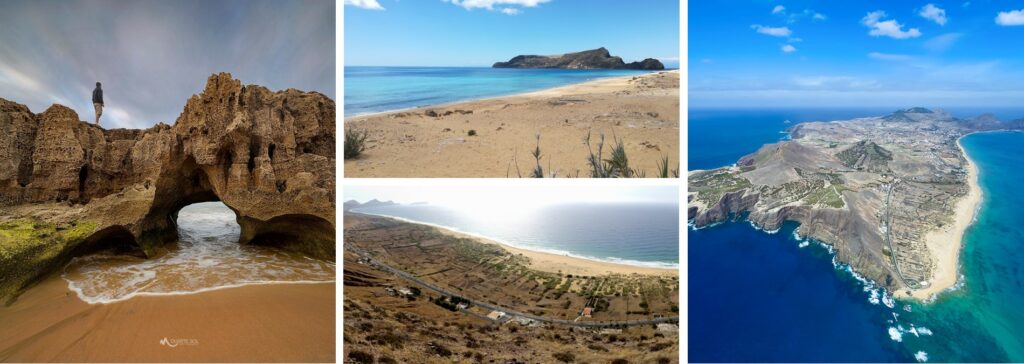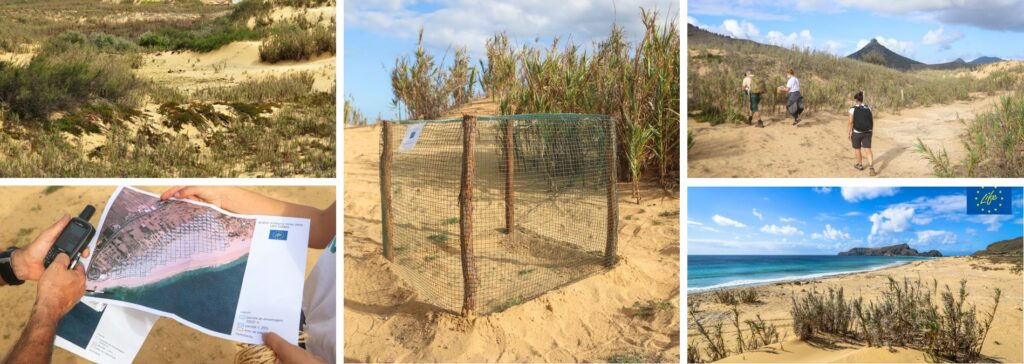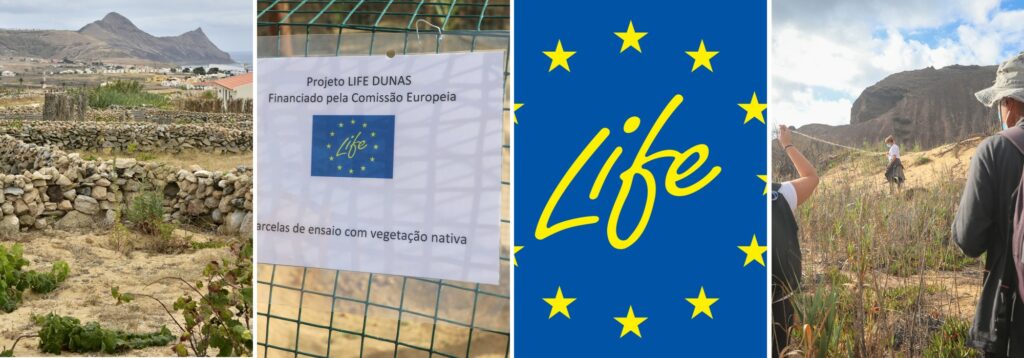Life Dunas – Porto Santo
Life Programme – European Union
Life Dunas is part of the greater LIFE programme. The latter is the EU’s funding instrument for the environment and climate action created in 1992. The previous funding period 2014-2020 had a budget of €3.4 billion.
The report on the LIFE programme’s impact on nature and society is available. It features key messages and recommendations for the future of the LIFE programme to ensure its unique role in conserving and restoring Europe’s most precious habitats and species. To download and read it, click here.
A list of all projects across the EU per country is available here. Portugal and Madeira also have active projects in the Life Programme such as the one described here below. Its name is Life Dunas and takes place on the island of Porto Santo, Madeira.
Protecting Madeira’s sand dunes in the face of climate change (Life Dunas)

The unique sand dunes of the Madeira archipelago’s Porto Santo Island are a pull for tourists in this EU outermost region. Hence, they are definitely worthy of conservation efforts. The programme will run from October 2020 to September 2025.
But this coastline is under threat from the environment such as storms and rising global sea levels. The project team will therefore improve the resilience of Porto Santo’s dune ecosystems to the impacts of climate change. Thus to achieve this, the team will work along three main axes:
Firstly the team will restore dunes at higher risk using sand dredged from sandbanks near the shore. Secondly, they will plant nearly 40 000 specimens of native flora. Thridly, they plant to control invasive alien species, such as Carpobrotus edulis, Arundo donax and Tamarix gallica.

The local population, tourists and tourism service providers will also be involved through awareness-raising and replication activities.
Life Dunas Objectives
As a result, LIFE DUNAS‘s main objective is to improve the resilience of Porto Santo Islands dune ecosystems to the impacts of climate change.

The specific objectives are:
- Restoration of a higher-risk depression dune area;
- Promotion of innovative (re)use of pre-dune areas for agriculture; and
- Improvement in overall climate governance and awareness raised among the local population and users of the sand dunes (tourists and tourism service providers).
Expected Results
- Improved coastal dune resilience;
- Improved shadowing and microclimatic conditions to face heat waves through planting of over 39 000 specimens of native flora;
- Greater resilience to wind erosion in pre-dune areas through planing almost 11 000 m2 of vineyard;
- Improved resilience to flooding and erosion caused by storms in vulnerable areas; and
- Complementary reduction in CO2 emissions from avoided energy consumption of over 235 kg/yr.